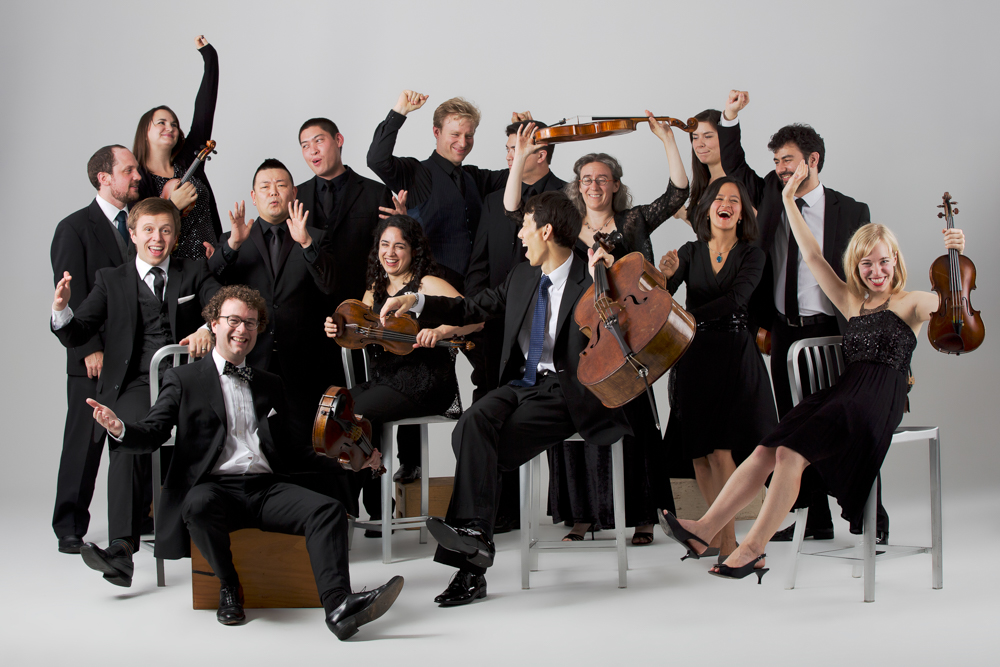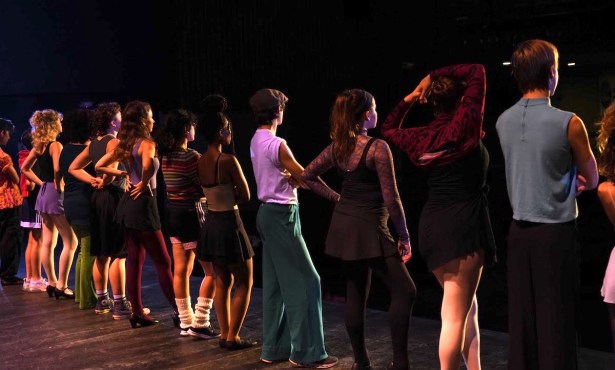UCSB Presents Conductor-less Chamber Orchestra
A Far Cry Rewrites Rules for How Ensembles Behave

An orchestral arrangement of the Goldberg Variations that includes vocals; trance-like cadenzas inspired by Philip Glass in Brandenburg Concerto No. 3. These unusual and innovative approaches to the music of the great Johann Sebastian Bach could only come from the exciting chamber orchestra A Far Cry. This Grammy-nominated 18-piece ensemble will make its Santa Barbara debut at the Music Academy’s Hahn Hall on Friday, February 15, courtesy of UCSB Arts & Lectures and its Up Close and Musical series.
Hailing from New England, these intrepid musicians are rewriting the rules for how chamber ensembles are supposed to behave. A recent collaboration with the well-known pianist Simone Dinnerstein on the music of Bach and Phillip Glass has evolved into an ongoing series of experiments involving the Goldberg Variations. The audience in Santa Barbara will be treated to a program emphasizing the Criers (that’s what they call themselves) in their most proven and tested modes, as radical interpreters of the baroque (in this case Bach) and as champions of new music (meaning in this case Glass, Béla Bartók, and Osvaldo Golijov).
When I spoke with Crier Megumi Stohs Lewis by phone last week, the group had just finished rehearsing for a performance of the Goldberg Variations that night with Dinnerstein at the New England Conservatory’s Jordan Hall. She took a few moments out of her busy day to share her remarkably vivid observations about the upcoming Santa Barbara program, and to tell her personal A Far Cry origin story, as she is one of the group’s founding members.
“All these pieces feel like coming home,” she said of the works we will hear at Hahn Hall. “We’ve played them many times, but the fact that we rotate through the leadership role keeps them fresh.” She described the Bartók Divertimento, Sz. 113 as “a juggernaut” and said that it reminded her of “swarms of insects connecting to the core of the earth.” Golijov’s Tenebrae, on the other hand, is “very celestial, like seeing the earth from space as a blue dot in the distance, and then zooming in for a close-up.” She feels that the work, which started out as a string quartet before the composer adapted it for string orchestra, has benefited from the new orchestration, and she encouraged listeners to be on alert for a section that’s intended to sound like “a chorus of tropical frogs.”
One source for the distinctive sound of the ensemble is the fact that half of its members perform regularly with one or the other of several distinguished baroque music organizations in the Boston area. “AFC couldn’t have started anywhere else,” said New Englander Stohs Lewis, adding that “we’re mostly from elsewhere, but the graduate schools in this region are what brought us together.”
As for the origin story, it comes in two parts. Act One takes place in the back of a bus, or, to be more specific, the back of a tour bus for the classic rock group Jethro Tull. A young Stohs Lewis and another musician were providing string accompaniment for such Tull hits as “Aqualung,” and after a month of talking it over, they decided that there had to be another way to earn a living making music. For Act Two, we move to a basement rehearsal studio at the New England Conservatory. The nucleus of A Far Cry has gathered there to read through a piece of music together, and at some point, one of the players suggests that they all stand up. “We’ve been standing ever since,” said Stohs Lewis, and that’s how it all began.
4•1•1
A Far Cry will perform for UCSB Arts & Lectures Friday, February 15, 7 p.m., at the Music Academy’s Hahn Hall. Call 893-3535 or see artsandlectures.ucsb.edu.



